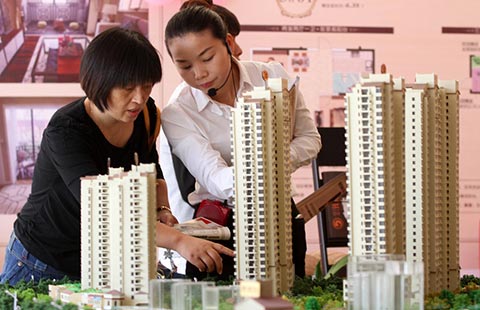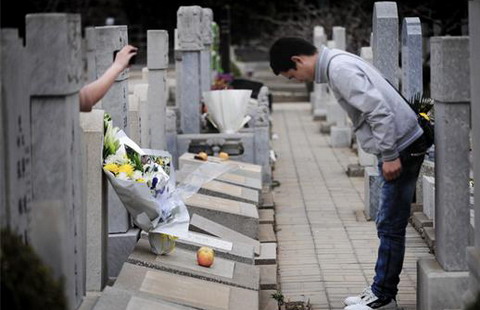
The New Silk Road Economic Belt and the 21st Century Maritime Silk Road initiatives, also known as "One Belt, One Road", would accelerate China's urbanization by offering more opportunities for international exchange, argued a Chinese scholar at a Washington think tank.
"The new policy will be absolutely positive to support the overall development of the whole west part of China," Hu Biliang, professor of economics and dean of the Beijing Normal University School of Development Studies, said Thursday at the Brookings Institution.
Along with the "significant increase in transportation, complexity, the flow of people among different countries and the western part of China by the link with China and the Europe", it would benefit five underdeveloped provinces and region— Shaanxi, Gansu, Ningxia, Xinjiang and Qinghai — in particular, said Hu.
During the Boao Forum for Asia on March 28, an annual economic dialogue in Hainan province, Chinese President Xi Jinping delivered the keynote address, saying "One Belt, One Road" aimed at "promoting the orderly and free flow of economic factors, highly efficient allocation of resources and deep integration of markets".
It also will encourage "the countries along the Belt and Road to achieve economic policy coordination and carry out broader and more in-depth regional cooperation of higher standards" and jointly create an "open, inclusive and balanced regional economic cooperation architecture that benefits all", Xi said.
Fourteen Chinese provinces, regions and municipalities will undertake construction projects under the initiative, which focuses on China's regional development strategy, new urbanization strategy and "opening-up" strategy, according to Shanghai's China Business News.
It will expand and accelerate the opening up of the inland and border areas and facilitate the formation of a new pattern of overall exposure in China, said the report.
"Currently, the urbanization rate in China is a little higher than 50 percent, far from the 70 percent threshold at which the urbanization process will become stabilized," said Niu Li, director of the Macro-economy Studies Office at the Economic Projections Department of the State Information Center.
"A rise of one percentage point will draw 10 million rural residents into cities and hence generate 100 billion yuan in increased consumer demand," he said.
Niu said the acceleration of urbanization will "inevitably help raise the productivity, stimulate investment in urban infrastructure and public service and increase people's income and spending, which in turn will create favorable conditions for agricultural modernization and thus release the huge potential of domestic demand".
Wu Jianmin, a member of the Foreign Policy Advisory Committee of the Ministry of Foreign Affairs, said it would provide not only Asia but also the world with a "powerful engine for further growth".
"The One Belt, One Road initiative aims at promoting the development of all these three regions together. If we succeed, it will provide Asia with a powerful engine for further growth. That will be good news not only for Asia, but for the whole world," Wu said.
Brought up by Xi in September 2013, the initiative refers to the New Silk Road Economic Belt that links China and Europe through Central and Western Asia, and the 21st Century Maritime Silk Road, which connects China with Southeast Asian countries and Africa and Europe.
Concerning 65 countries and 4.4 billion people, the initiative consists of cooperation on a network of infrastructure such as railways and highways, as well as oil and gas pipelines, power grids, Internet networks and aviation routes in the Eurasian area.
In 2014, China's bilateral trade with nations in the regions reached $1.13 trillion, a 7-percent increase over the previous year, and accounting for 25 percent of China's overall foreign trade within the year, according to the Chinese government.
Sheng Yang in Washington contributed to this story.








